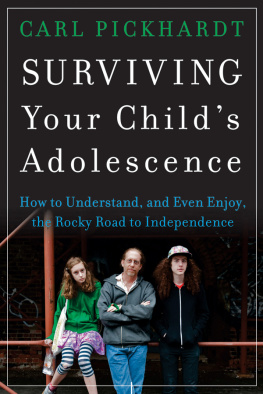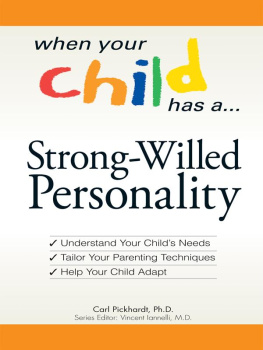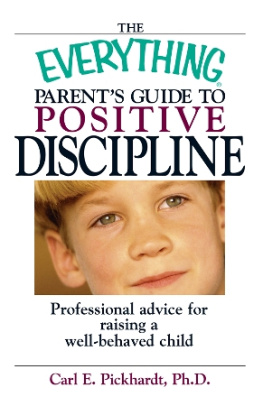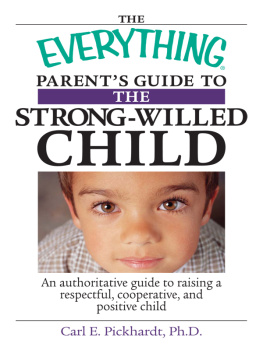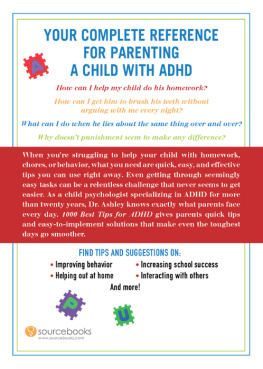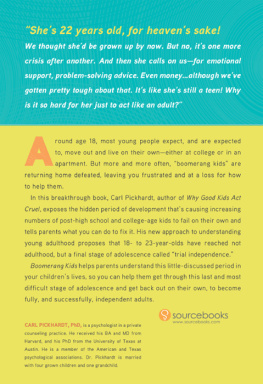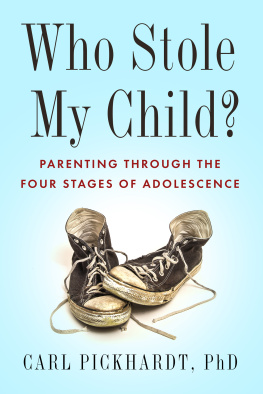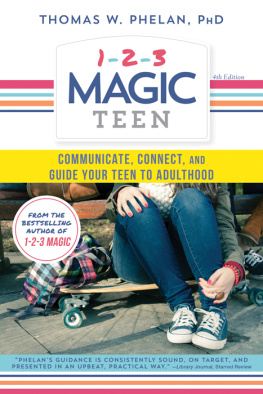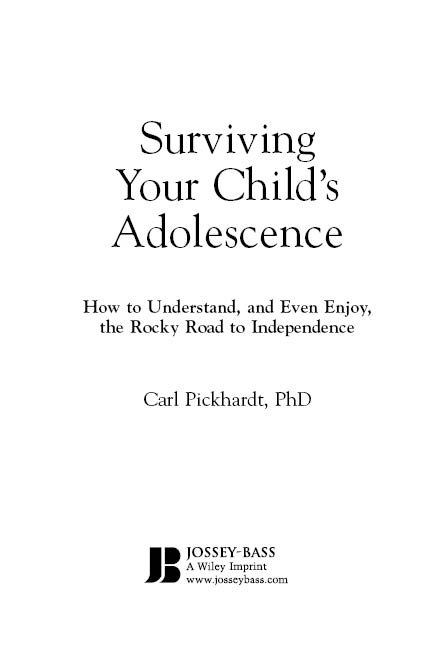
Table of Contents
Cover image: Joseph O. Holmes/Flickr/Getty Images
Cover design: J. Puda
Copyright 2013 by Carl Pickhardt. All rights reserved.
Published by Jossey-Bass
A Wiley Imprint
One Montgomery Street, Suite 1200, San Francisco, CA 94104-4594www.josseybass.com
No part of this publication may be reproduced, stored in a retrieval system, or transmitted in any form or by any means, electronic, mechanical, photocopying, recording, scanning, or otherwise, except as permitted under Section 107 or 108 of the 1976 United States Copyright Act, without either the prior written permission of the publisher, or authorization through payment of the appropriate per-copy fee to the Copyright Clearance Center, Inc., 222 Rosewood Drive, Danvers, MA 01923, 978-750-8400, fax 978-646-8600, or on the Web at www.copyright.com. Requests to the publisher for permission should be addressed to the Permissions Department, John Wiley & Sons, Inc., 111 River Street, Hoboken, NJ 07030, 201-748-6011, fax 201-748-6008, or online at www.wiley.com/go/permissions.
Limit of Liability/Disclaimer of Warranty: While the publisher and author have used their best efforts in preparing this book, they make no representations or warranties with respect to the accuracy or completeness of the contents of this book and specifically disclaim any implied warranties of merchantability or fitness for a particular purpose. No warranty may be created or extended by sales representatives or written sales materials. The advice and strategies contained herein may not be suitable for your situation. You should consult with a professional where appropriate. Neither the publisher nor author shall be liable for any loss of profit or any other commercial damages, including but not limited to special, incidental, consequential, or other damages. Readers should be aware that Internet Web sites offered as citations and/or sources for further information may have changed or disappeared between the time this was written and when it is read.
Jossey-Bass books and products are available through most bookstores. To contact Jossey-Bass directly call our Customer Care Department within the U.S. at 800-956-7739, outside the U.S. at 317-572-3986, or fax 317-572-4002.
Wiley publishes in a variety of print and electronic formats and by print-on-demand. Some material included with standard print versions of this book may not be included in e-books or in print-on-demand. If this book refers to media such as a CD or DVD that is not included in the version you purchased, you may download this material at http://booksupport.wiley.com. For more information about Wiley products, visit www.wiley.com.
Library of Congress Cataloging-in-Publication Data
Pickhardt, Carl E.
Surviving your childs adolescence : how to understand, and even enjoy, the rocky road to independence / Carl Pickhardt. 1st ed.
p. cm.
Includes bibliographical references and index.
ISBN 978-1-118-22883-8 (pbk.); ISBN 978-1-118-41934-2 (ebk.); ISBN 978-1-118-42122-2 (ebk.); ISBN 978-1-118-43386-7 (ebk.)
1. Parent and teenager. 2. Parenting. 3. Teenagers. 4. Adolescence. I. Title.
HQ799.15.P53 2013
305.235dc23
2012038559
To all those parents and teenagers who manage to keep their relationship together while adolescence is growing them apart, as it is meant to do
Acknowledgments
I thank Psychology Today for the opportunity to write the weekly blog Surviving (Your Childs) Adolescence, which provided the inspiration for this book. Special thanks need to be given to all the parents at workshops over the years who have taught me so much as I was trying to teach them a little; to my four grown children, who each introduced me to a new path through adolescence; to my agent, Grace Freedson, who keeps managing to find publishers for my parenting books; and of course to Irene, who is a wonderfully supportive writers wife.
About the Author
Carl Pickhardt, PhD, the author of fourteen parenting books as well as works of adult and childrens fiction and of illustrated psychology, is a writer, graphic artist, and psychologist in private counseling and public lecturing practice in Austin, Texas. He received his BA in English and MEd in counseling from Harvard, and his PhD in counseling psychology from the University of Texas at Austin. He is a member of the American Psychological Association. He has four grown children and one grandchild.
Pickhardt has written newspaper, magazine, and Internet columns about adolescence, family life, and adult relationships. For the past four years he has been writing a weekly parenting blog for Psychology Today, Surviving (Your Childs) Adolescence.
Pickhardt gives frequent public lectures about parenting and adolescence to PTAs, church congregations, and mental health groups, and is often interviewed by print media about diverse aspects of child development, parenting, and family life. More information about all his books can be found on his website: www.carlpickhardt.com.
Authors Note
Unless otherwise attributed, all quotations and case examples used in this book are fictional, created to reflect concerns and to illustrate situations similar in kind but not in actuality to those I have heard from clients over the years.
Introduction
Given what Ive heard from other parents with teenagers, Im dreading our childs adolescence. They make it sound like such a hard timeharder to get things done, harder to get along, harder on everyone. My child and I have been such good company up to now. Cant we just remain friends?
Despite whatever alarming accounts you may have heard, you are not destined, or even obligated, to go through agony when your child enters adolescence, a relatively recent concept that dates back to the early 1900s when psychologist Stanley Hall first popularized the term. Adolescence describes the transitional time between the end of childhood and the onset of early adulthood, a period that has lengthened in this country over the years, thanks in part to child labor laws, compulsory K12 education, and a growing discontinuity between the generations because of increasingly rapid social and technological change.
From what I have seen these many years in private family counseling practice and speaking with parents at workshops, about a third of young people go through adolescence without making much of a ripple in family life, growing and changing well within the home rules and tolerances of their parents. These are the easy adolescents. Another third intermittently pushes some family limits, but these episodes are usually successfully confronted and resolved so that life goes forward without any major disruption. These are the average adolescents. And then there is the final third of young people, who break significant family boundaries or stumble into serious unhappiness, and it is the parents of these who usually seek counseling help. These are the troublesome or troubled adolescents. If you have multiple children, a single easy adolescent is all you are likely to get, so dont automatically expect such smooth parental sailing with the next or the rest based on your harmonious experience with one. Even with an easy adolescent, however, there will still be some normal adjusting to do.
Adjusting to what? This is the question parents need to be able to answer if they are to be adequately prepared for the teenage years. To effectively keep up with an adolescent, it helps to stay ahead of the growth curve by anticipating what common changes, tensions, problems, and conflicts will typically arise as the process unfolds. Confusing to parent and teenager as adolescence may seem, it is a developmental process, orderly in its larger outline. Most important for parents to accept at the outset of this transformation is that an adolescent is

